A Jell-O Mold Christmas
A holiday wish for all, and a nostalgic look at an iconic ingredient that broke the mold...
I hope you all are enjoying the holiday season! This will be the last post for 2023, and again, I want to thank all my readers for being so supportive this year. The Historical Fiction Stack is growing and there are a lot of good things on the way in 2024.
I was going to do a post highlighting Christmas dinner throughout history, but frankly, it was boring, like the menu above. Peas, yams and all types of potatoes aren’t particularly interesting, even when dressed up in their holiday finest, like the beautiful menus from the iconic New York City restaurant Luchow’s for Christmas 1961. Can you believe what six bucks could buy?
Or this menu keeping with the theme of military and 1918 in Theda’s Time Machine:
But did I want to talk about cabbage, potato salad and mince pies? Nope. I was rapidly losing interest in the subject when I came across advertisements and featured holiday recipes from the 1970s, straight from the pages of food magazines, like the king of all culinary publications, Bon Appétit. And my vision of an elegant post with Norman Rockwell paintings of a Christmas dinner morphed into a shimmering tower of gelatin with suspended hot dog slices.
I was born in 1974, and I remember the early ‘80s issues of Bon Appétit, which my mother snipped with Edward Scissorhands-like delight, filing the Tetris-shaped clippings in manilla folders, the tabs titled in her neat block handwriting: APPETIZERS, MAIN COURSE, DESSERT and, containing all the specialness, HOLIDAY.
Before cable networks devoted their entire programming schedule to food, turning everyday chefs into mega-brands, and before social media instructed even the inept on how to prepare and stylize food, Bon Appétit was the window to culinary sophistication. First launched in 1956 as a liquor store giveaway1 it was transformed into a subscription-based publication in the 1970s, arriving in the mailbox in thousands of households to up the game of the head chef, otherwise known as MOM. This coincided with another large cultural shift, which was the influx of women entering the workforce. Thanks to the availability of preprepared and frozen foods, gone were the days of hours of food preparation and producing food from scratch. Now, it was quicker, easier, and faster to get a meal on the table.
While researching my Christmas dinner post, I came across holiday recipes and advertisements which, if I were utilizing my mother’s filing system, would have been in the folder titled FOR YOUR ENEMIES. I decided that I would end this year on a laugh because, well, I need one. So do you. The holidays are a trying time for a variety of reasons, the main one being the absence of loved ones who departed this earth leaving behind either culinary legend status or heading to that great liverwurst and onion sandwich picnic in the sky. Wherever you are in life, just be grateful that your Christmas dinner doesn’t include anything in a JELL-O MOLD:
Jell-O was invented in Le Roy, New York, in 1897 and five minutes later one apron-clad overachiever got the idea to pour it in a decorative mold to outdo the other women in the Bridge Club. The blank canvas of Jell-O opened a world of endless possibilities. Who wouldn’t want to see sliced fruit suspended in atomic age colors?
Then, something sinister happened. It wasn’t enough to slice bananas into fallout shelter yellow Jell-O. What I can only surmise was another time saving shortcut dressed up as delight, meat was added to flavorless gelatin.
The above is Duck Mousse in Geleé, with shredded duck meat, chicken stock and a packet of gelatin. And remember: in order to keep the shape of this, it was served cold. This from Bon Appètit in the ‘70s was perhaps the pinnacle of meat in a mold. But while we’re on the subject of savory molds, let’s take it down to earth and explore a few examples of what my mother’s filing system would call BACHELORETTE PARTY FOODS. I wish I had this photograph for my high school Subliminal Messages in Advertising class:
But seriously, if we’re writing historical fiction stories, we should know what is on the dinner table. Theda’s Time Machine is the first in a planned series and in future books, my main characters might find themselves in the 1970s. Do I have to write in a Jell-O mold dinner?
Italians to the Rescue
I grew up in an Italian household in New Jersey. For many Italian-American families, Christmas Eve is about seafood, or the Feast of the Seven Fishes. In my family, we generally had spaghetti with homemade white clam sauce, then headed to church. I feel sorry for whoever had the misfortune to land in the pew in front of us while we belted out those Christmas carols because my grandmother was heavy handed on the garlic. For a lot of ethnic families, the Jell-O mold phenomenon was absent, as was overly fancy food, like the shrimp tower below:
The effort this shrimp tower took is impressive, although I think the ones at the bottom look like the shrimp that came alive during the dinner scene in Beetlejuice.
Once when I was little, I badgered my mother to buy me Spaghetti-Os, probably because of the incessant advertising during my cartoons. In an Italian family, if you asked for pasta in a can, you got another thing without asking: a smack upside the head. But my mother finally gave in. Luckily, she never dumped the can into a gelatin mold:
What was your favorite holiday meal memory? Let me know in the comments!
I wish you all a wonderful New Year! I’ll leave you with a gallery of the best ‘70s horror show foods that made me laugh. See you next year.
Love,
Alison


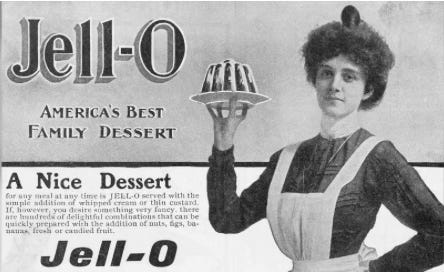



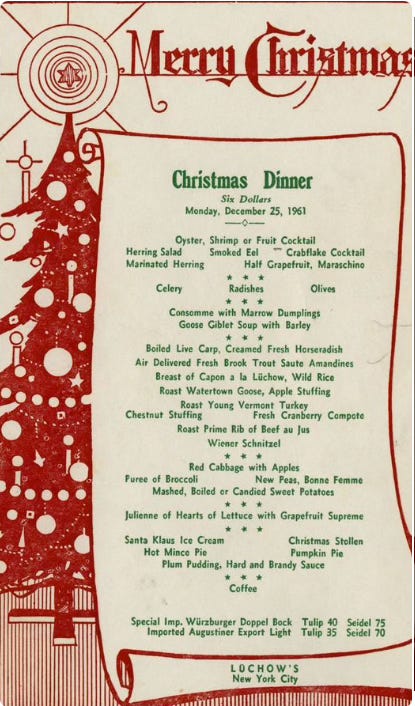
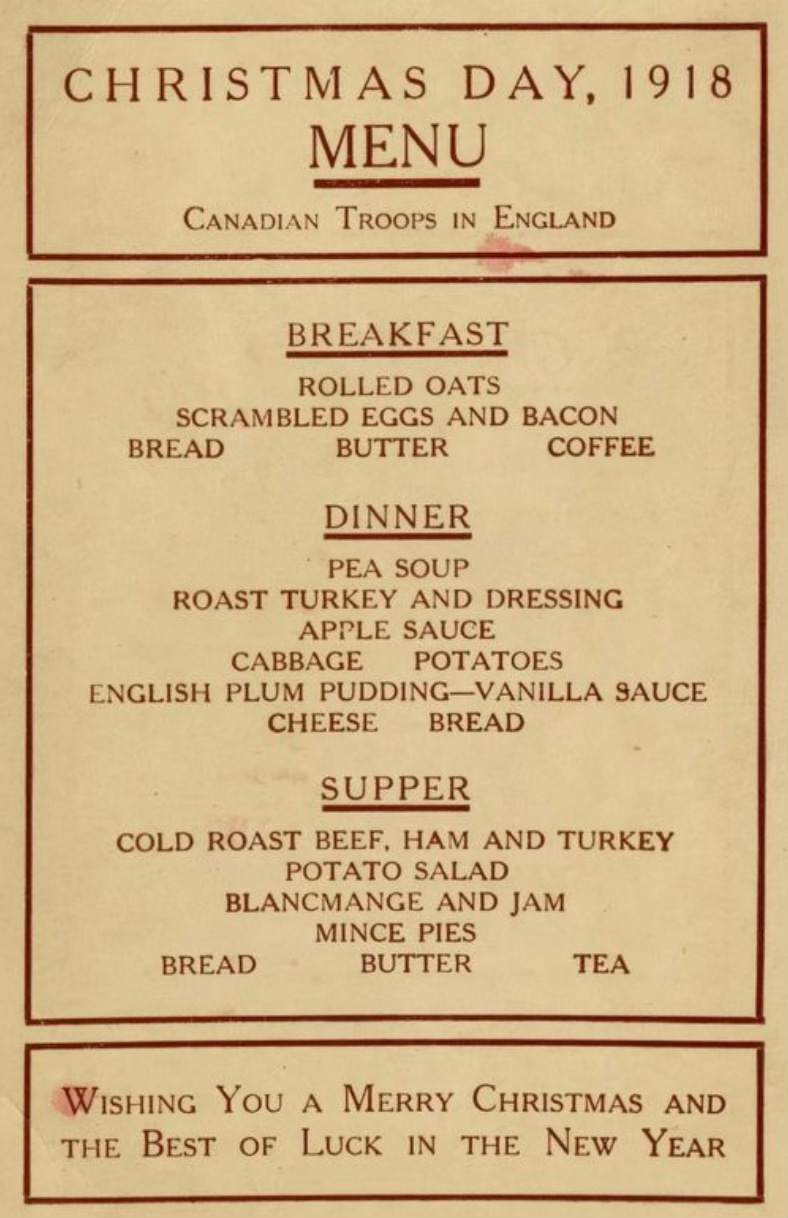
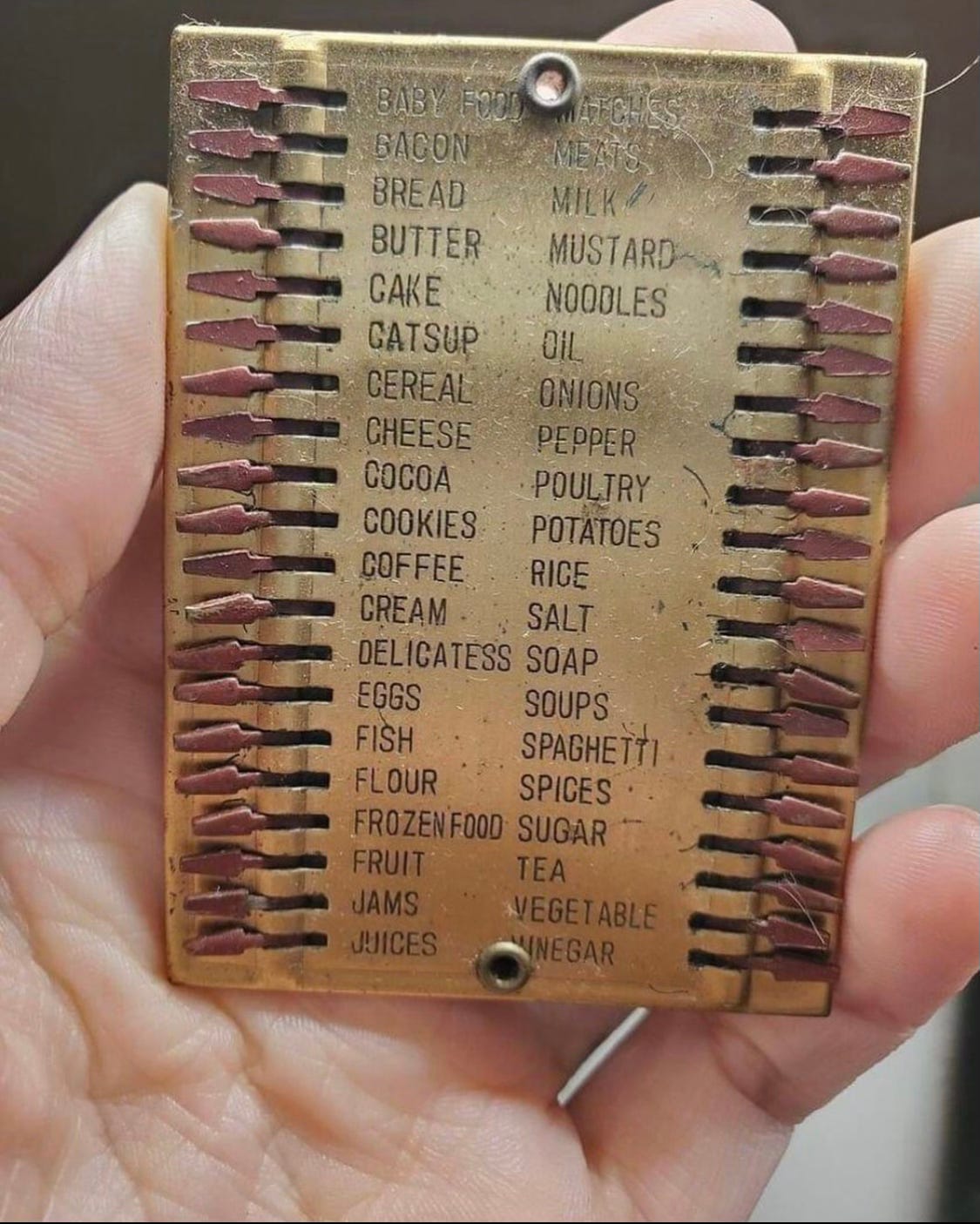


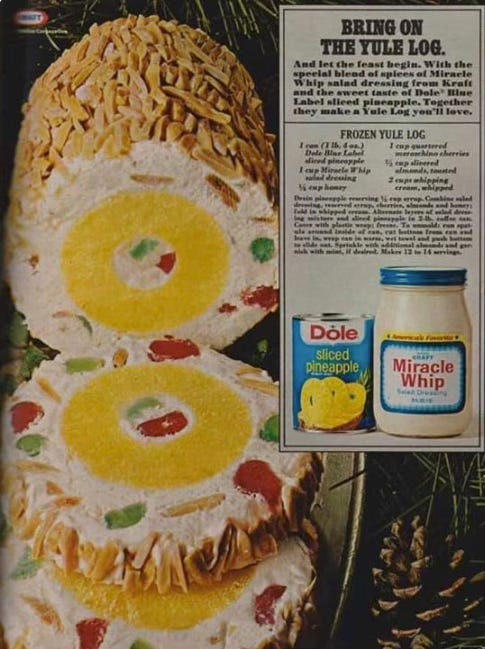
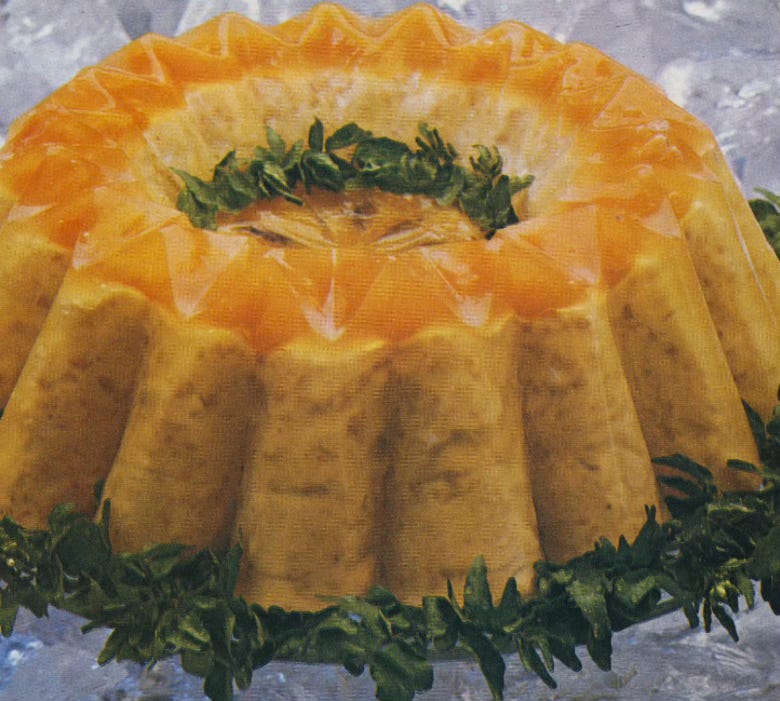

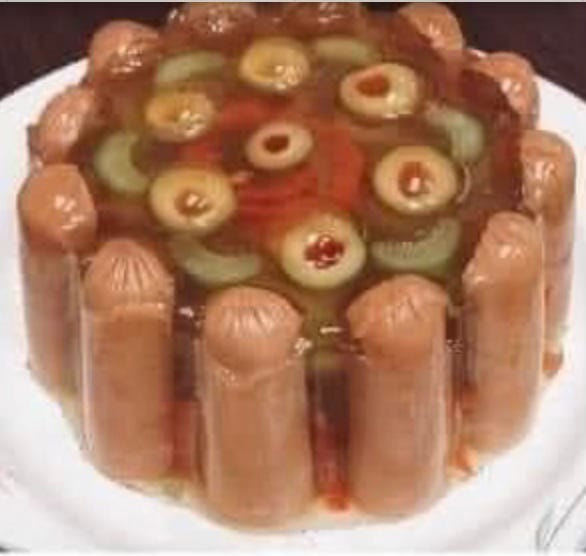
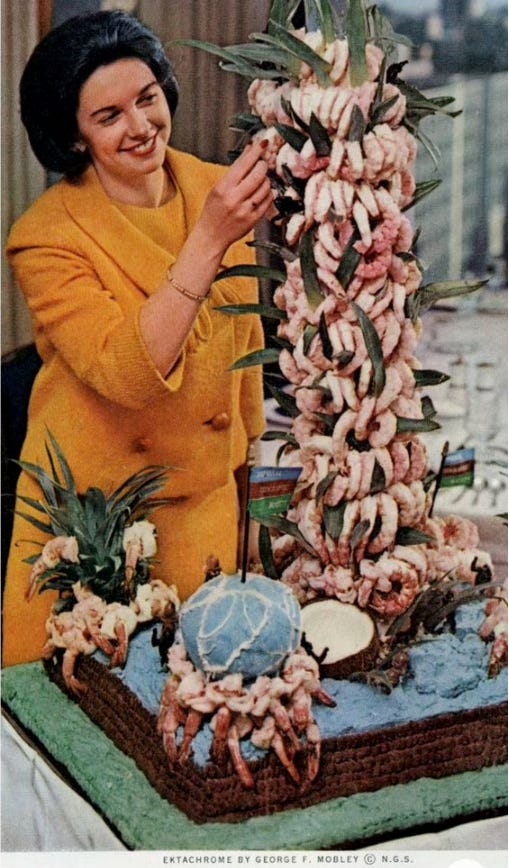
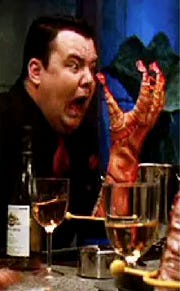


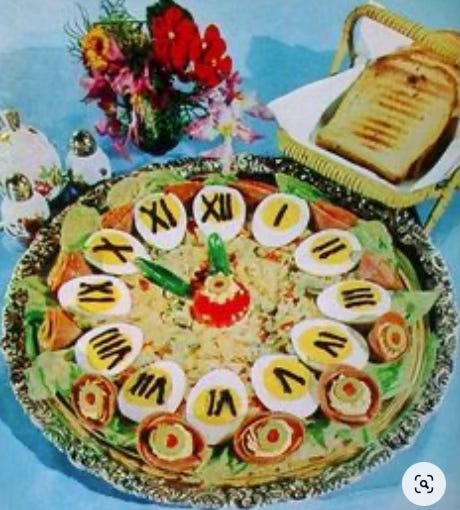

This is a subject I’m deeply a passionate about and I so thoroughly enjoyed this!!!
You have just recreated all of my family holidays. I am not sure that I have strong enough words to curse you.